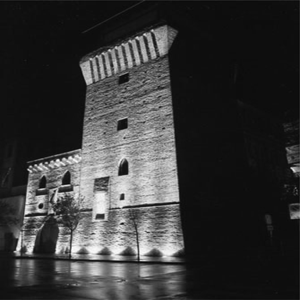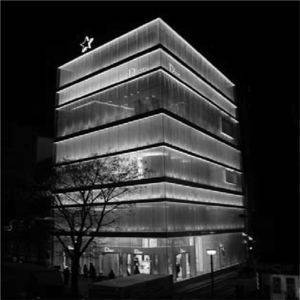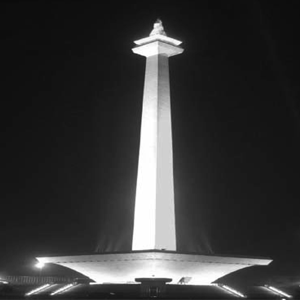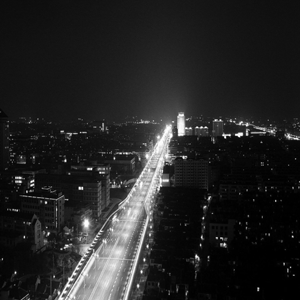Lu Fei Changzhou City Lighting Engineering Co., Ltd.
Abstract This paper briefly describes some methods commonly used in landscape lighting design from two aspects: “general steps of landscape lighting design†and “design performance of different types of landscapesâ€.
Key words landscape lighting function lighting design skills
With the rapid development of the economy, the living standards of the people are constantly improving, and the pressures of life and work are getting bigger and bigger. In addition to intense work and study, people need a green space away from the hustle and bustle of the city to relax.
Therefore, the open garden space in the city is more and more popular. The landscape lighting design for such "urban oasis" has also been mentioned as an increasingly high position. The following are some of my experiences in garden landscape lighting design for your reference.
First, the general steps of garden landscape lighting design:
(1) Analysis of relevant information;
1. Understand the humanities and history of the city where the garden is located; examine the landscape lighting features of the surrounding gardens.
2. Understand the design orientation of the landscape architect by the landscape architect.
(2) Proposing a design concept;
1. Analyze the surrounding environment and landscape features of the garden, and summarize the elements that are useful for landscape lighting design.
2. Put forward the concept of landscape lighting design.
(iii) Conducting lighting analysis;
1. Analysis of the route of the garden, and the relationship between the visual focus of the visitors viewing the garden according to the tour line and the relationship between the landscape nodes on the tour line. (Simply introduce, the implementation of functional lighting)
2. Functional analysis of the landscape nodes, deducing the design style of each node in the park and the brightness that must be achieved when implementing landscape lighting.
3. Analysis of the main scenes. According to the analysis of the route of the garden and the functional analysis of the landscape nodes, several main viewpoints in the garden are extracted to form a large visual scene.
(iv) Deepening lighting design
In the process of deepening the design, the landscape lighting design of each scene must be closely related to the overall design concept. Under the guidance of the above landscape lighting analysis, the design should be based on the relationship between the primary and secondary of the landscape nodes, the strength of the landscape lighting, and the observed order.
Second, the design performance of different types of landscape:(i) Night illumination of buildings
The night illumination of buildings, the most commonly used are floodlighting, contour lighting, and internal light-transmitting lighting.
The floodlighting of the building's façade is to directly illuminate the facade of the building with a projection (flooding) lamp at a certain angle calculated by the design, reshaping the image of the building at night. The effect can not only show the whole picture of the building, but also can effectively express the shape, three-dimensionality, stone material and material texture, and even the decoration detail of the building.
Floodlighting is not simply to reproduce the daytime image of a building. Instead, it uses the means of light, color, and shadow of the floodlighting to reshape the building's more attractive, pretty, and majestic image at night.
Architectural outline lighting is to directly outline the building with line light sources (string lights, neon lights, light-resistant lights, light pipes, LED light bars, all-body light-emitting fibers, etc.). Illuminating the edge of a building with a narrow beam of light also serves to outline the outline.
 |  |
Floodlighting | Outline lighting |
The inner light-transmitting illumination is the use of indoor light or a device in a special position to transmit light from the interior of the building to form an exquisite and clear night lighting effect.
(2) Night illumination of the square
The shape and area of ​​the square are neither fixed nor varied. The lighting must be grasped on the premise of satisfying the functional lighting. According to the inherent characteristics of the square, the function of the square can be fully utilized.
Square landscape lighting, first of all, the landscape lighting of the buildings around the square and the lighting of the square parts should be unified. The lighting of the squares and the roads around the squares should be coordinated, and the inherent culture should be unified.
The main lighting of the square includes: fountains, square floors and markers, arrays of trees, entrance and exit lights of underground shopping malls or subways, and ambient lighting such as surrounding green spaces and flower beds.
(3) Night illumination of the bridge
Modern bridges are mostly modern cable-stayed cable-stayed bridges with twin towers and single towers. The shape of the cable-stayed bridge is characterized by a cable. The lighting of the bridge will focus on this feature. With a variety of lamps and unique artistic techniques, a huge harp stands on the river and the river.
 |  |
Inner light transmission | Bridge night illumination |
In order to complete the overall effect of the festive atmosphere of the bridge, along the road on both sides of the bridge, an art lamp can be placed every 4-5 meters to make it a glittering pearl necklace.
The floodlighting of the façade of the main tower can be divided into three aspects. When the light is projected upwards from the bottom, the whole main tower should be crystal clear and white, and majestic. This is the top priority of the bridge landscape.
In order to make the main tower illuminate, the perspective effect is good. It is necessary to set the platform under the road surface, and use the floodlight to illuminate the tower base part of the upper part of the water from the top to the bottom, so that the lighting effect of the tower is like a giant standing in the river. Above. (iv) Landscape lighting of the tower
The tower body usually consists of several basic parts such as the base, the tower body and the tower top, which form a harmonious whole. Architects give each part the corresponding meaning when designing. They all have a corresponding role or function. From an aesthetic point of view, its aesthetic value lies in erecting a landmark for a region. Therefore, the complete lighting performance of each part of the tower body is very important, and the overall image of the alienation tower will be represented by a certain part or thick.
The lighting settings of each part of the tower should consider the needs of viewing. The top part of the tower is usually for long-distance viewing, and the lighting brightness should be appropriately higher; the tower body part is often a part with rich details and carrying architectural style. The lighting method should be selected in a targeted manner, and the tower body components and carvings should be meticulously described. Sexual lighting techniques make the main part of the tower stand out; the base of the tower is a close-up part, and the lighting performance of the part is to complete the integrity of the image of the tower. The lighting set for them should take into account the close distance of people. The feeling of viewing, in the configuration of lighting brightness, light color, light projection direction, etc., should be aimed at people's visual comfort. As far as the whole tower is concerned, from the bottom up, the illumination of the illumination light should be gradually increased, which can cause a sense of towering and conform to the visual law when people view the scene.
 |
Tower landscape lighting |
(v) Landscape lighting of overpasses
Overpasses are often located in the city's main thoroughfare and are an important part of the overall effect of urban landscape lighting. Looking at the overpass from a high point of view from a distance, it is a lane that runs up and down and then spreads around. The image of the driveway is mainly represented by the railings on the side of the driveway. The overpass is a multi-level, multi-lane vertical overlap, and the performance of the level of depth, in order to truly reflect the landscape charm of the overpass.
Green space and green space should be set up in the overpass area to play an important role in the landscape environment of the adjustment bridge area, and should be fully utilized.
From the high-vision point, you can see the panoramic pattern of the overpass, which has the outline of the lane side, the lighting composition and lighting sculpture in the green space, and the bright lines formed by the street lights in the bridge area. These lighting elements are combined to form an organic overall picture. .
 |
Overpass landscape lighting |
Trees are one of the four major elements of landscape architecture. There are many varieties of trees, and there are many different ways to adjust and protect the environment in addition to beautifying the environment for people to watch. Lighting should be treated differently depending on the height, size, shape and color of the trees.
(8) Functional lighting of the park road
The way to illuminate the roads in the park: the road is the vein of the garden, and the visitors are guided to the various attractions from the entrance. The path is twisted and twisted, creating a kind of step-by-step effect and a winding path. Lighting methods should be closely linked to this feature.
(9) Landscape lighting of sculpture pieces
The sculptures and signs in the garden are ornamental; the other is commemorative. Lighting should be based on the characteristics of the sculpture, especially for key parts such as: head, demeanor, materials, color and surrounding environment, using side-to-side projection from the top, not suitable for uniform illumination from the front, so as to create a true look and radiance. , three-dimensional sense of strong lighting effects. A narrow beam luminaire should be chosen with an appropriate light source to avoid the direction of the sight of the visitor and prevent glare interference.
(10) Landscape lighting of ancient buildings
Chinese classical architecture is unique and self-contained, with its own characteristics in terms of materials, shapes, and layouts and spatial layouts. The main building is centered and other buildings are developed to the sides according to the central axis. The building form is basically composed of three parts: the base, the roof and the roof.
The roofs of Chinese classical buildings are often made into soft curves, surrounded by stilts and covered with blue-gray tiles or glass tiles. This is one of the inherent characteristics of Chinese classical architecture. Therefore, accurately grasping this feature and highlighting it in the form of lights at night is the key to Chinese classical architectural lighting.
The door arches that are stacked with the criss-crossing end woods have become the unique formation of Chinese classical architecture. The oil-painted paintings of the beam-column arches add to the beauty of the building through colorful patterns. The selection of appropriate light sources with appropriate luminaires is the focus of Chinese classical architectural lighting.
For the lighting treatment of the order base, the layout, shape, color and materials of Chinese classical architecture are different from those of modern architecture. Therefore, the lighting, color matching and lighting design of the lighting should highlight the characteristics of ancient architecture and strive to accurately express its unique characteristics. The classical architectural culture and artistic connotation are the starting point.
The above is a rough understanding of some types of landscape lighting design. When designing concrete, it should be used flexibly, and different landscape lighting methods should be adopted according to the specific conditions of the designed objects.
Description
✿Service Life
Mechanical ≥ 1000000cycles
Electrical ≥ 50000cycles(Degree of protection againstDepend on model No.
✿Approvals
UL CUL VDE TUV CE DEMKO CQC
✿ Material
Made of high quality plastic and metal, rust resistance and corrosion resistance, durable enough for you to hanging items, So the product appearance is exquisite, perfect workmanship.
✿ Rating
You can meet the different RATING daily needs. Please pay attention to the model of the switch before purchase, to ensure that you purchase the same as you need.
✿ Vairous Sizes
Actuator Action is momentary and Actuator Type is long straight hinge lever. Switch Body Size as shown in the picture.So different sizes can meet all your daily different needs.
✿ Wide Application
Home appliance: micro oven, electric cooker, washing machine, electric heater, warmer, water fountain and so on.
Commercial appliance: Vending machine, electric toy, electric tools, duplicating machine and so on.
Machinery: Transport machinery, printing machinery, textile machinery and so on.
Basic Micro Switch,Micro Power Switch,Waterproof Micro Switch,Micro Switch Limit Switch
Ningbo Jialin Electronics Co.,Ltd , https://www.donghai-switch.com